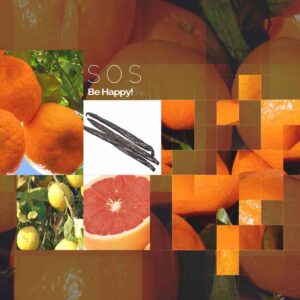Pure, Quality Products
Cinnamon Bark Essential Oil
Name: Cinnamon Bark Essential Oil
Species: Cinnamomum zeylanicum
Part: Bark
Extraction: Steam Distilled
Aroma: Fresh and spicy with a hint of woods
Cinnamon Bark Essential Oil 100% Pure
| Name | Cinnamon Bark Essential Oil |
| Batch | CZ111CB6 |
| Species | Cinnamomum zeylanicum |
| Extraction | Steam Distilled |
| Source | Madagascar |
| Color | Deep Yellow |
| Consistency | Medium |
| Note | Middle |
| Aroma | Fresh and spicy with a hint of woods, strong |
| Blend Ideas | Clove, orange, ginger, frankincense, copaiba, cardamom, coriander or ylang ylang |
We source only pure essential oils.
Cinnamon Bark is a warming essential oil that can add a lovely scent to any of your fall creations. We tend to not use it topically due to it it being a known dermal sensitizer. Often used as an immunity support oil, this oil smells like a freshly ground cinnamon stick, add clove, cardamom and ginger for a chai tea type scent.
With our pre-diluted oils . . . if diluted for kids is the highest dilution you see, it’s also the max dilution possible. Pre-diluted oils are in fractionated coconut oil.
You must be logged in to post a review.
Cinnamon Bark Essential Oil Safety Info
While some suggest never using Cinnamon Bark Essential Oil topically due to a high cinnamaldehyde content, Tisserand and Young suggest a max dermal application of 0.07%. Cinnamon Bark Essential Oil is at risk as a mucous membrane irritant and skin irritant it may inhibit blood clotting and is not for use during pregnancy or breastfeeding. Cinnamon Bark Essential Oil should still follow the safety guidelines below. ~ Source: Tisserand, Robert and Young, Rodney. Essential Oil Safety: A Guide for Health Care Professionals: Churchill Livingstone; 2 edition (2013). Reading the full profile for Cinnamon Bark Essential Oil is highly suggested by your DeRu Staff.
While we’ve made this clear that we are selling this essential oil to use in your diffuser, your inhaler, or topically (diluted), it is a pure essential oil and can be used as such. With all essential oils:
Oral Safety is only given because many people have been told to take oils internally. Because several people look to us for safety advice, we feel obligated to offer those safety statements, although we do not believe anyone should be ingesting essential oils without being guided by an expert. Experts will take your medical history into account before they suggest oils for you to ingest, diffuse, or use topically.
[display-frm-data id=7326 filter=limited entry_id=”5208″]
1. Antibacterial activity of essential oils and their major constituents against respiratory tract pathogens by gaseous contact
https://academic.oup.com/jac/article/47/5/565/858508
2. Antibacterial effects of cinnamon (Cinnamomum zeylanicum) bark essential oil on Porphyromonas gingivalis.
https://www.ncbi.nlm.nih.gov/m/pubmed/29325862/?i=5&from=cinnamon%20bark%20essential%20oil
3. Antibacterial Mode of Action of Cinnamomum verum Bark Essential Oil, Alone and in Combination with Piperacillin, Against a Multi-Drug-Resistant Escherichia coli Strain.
https://www.ncbi.nlm.nih.gov/pubmed/25381741
4. Antiinflammatory Activity of Cinnamon (Cinnamomum zeylanicum) Bark Essential Oil in a Human Skin Disease Model.
https://www.ncbi.nlm.nih.gov/m/pubmed/28444928/?i=16&from=cinnamon%20bark%20essential%20oil
5. Aromatherapy Massage on the Abdomen for Alleviating Menstrual Pain in High School Girls: A Preliminary Controlled Clinical Study
https://www.hindawi.com/journals/ecam/2012/187163/
6. The battle against multi-resistant strains: Renaissance of antimicrobial essential oils as a promising force to fight hospital-acquired infections
https://www.sciencedirect.com/science/article/pii/S1010518209000523
7. Chemical Burn From Cinnamon Oil
8. Cinnamon: A pharmacological review
http://www.sciensage.info/journal/1310494005JASR_1008103.pdf
9. Cinnamon Extract Improves Insulin Sensitivity in the Brain and Lowers Liver Fat in Mouse Models of Obesity
https://www.ncbi.nlm.nih.gov/pmc/articles/PMC3958529/
10. Cinnamon: Potential Role in the Prevention of Insulin Resistance, Metabolic Syndrome, and Type 2 Diabetes
https://www.ncbi.nlm.nih.gov/pmc/articles/PMC2901047/
11. Cinnamomum zeylanicum bark essential oil induces cell wall remodelling and spindle defects in Candida albicans.
https://www.ncbi.nlm.nih.gov/m/pubmed/29456868/?i=3&from=cinnamon%20bark%20essential%20oil
12. Effect of cinnamon on postprandial blood glucose, gastric emptying, and satiety in healthy subjects
https://academic.oup.com/ajcn/article/85/6/1552/4632985
13. Effects of Peppermint and Cinnamon Odor Administration on Simulated Driving Alertness, Mood and Workload
http://www.freepatentsonline.com/article/North-American-Journal-Psychology/200919505.html
14. Efficacy of cinnamon bark oil and cinnamaldehyde on anti-multidrug resistant Pseudomonas aeruginosa and the synergistic effects in combination with other antimicrobial agents.
https:/www.ncbi.nlm.nih.gov/m/pubmed/27245046/i=24&from=cinnamon%20bark%20essential%20oil
15. Inhibitory effects of cinnamon and clove essential oils on mold growth on baked foods
https://www.ncbi.nlm.nih.gov/m/pubmed/28946351/
16. Preventive effect of cinnamon essential oil on lipid oxidation of vegetable oil
https://www.ncbi.nlm.nih.gov/pmc/articles/PMC3845693/
17. Screening of the antibacterial effects of a variety of essential oils on microorganisms responsible for respiratory infections
https://www.ncbi.nlm.nih.gov/pubmed/17326042
18. Selective Essential Oils from Spice or Culinary Herbs Have High Activity against Stationary Phase and Biofilm Borrelia burgdorferi
https://www.ncbi.nlm.nih.gov/pmc/articles/PMC5641543/
19. Synergistic effects of some essential oils against fungal spoilage on pear fruit
https://www.sciencedirect.com/science/article/pii/S0168160517302891?via%3Dihub
Information provided has not been evaluated by the Food and Drug Administration.
The International Federation of Aromatherapists does not recommend that Essential Oils be taken internally unless under the supervision of a Medical Doctor who is also qualified in clinical Aromatherapy. All cautions listed for individual oils do not include those cautions from ingestion.
Links to outside sources open in a new tab or window and are often affiliate links to items we use and trust in. This means that, at no additional cost to you, we may receive a commission if you click through them and make a purchase. For instance, as an Amazon Associate we earn from qualifying purchases.
For educational purposes only.






Reviews
There are no reviews yet.